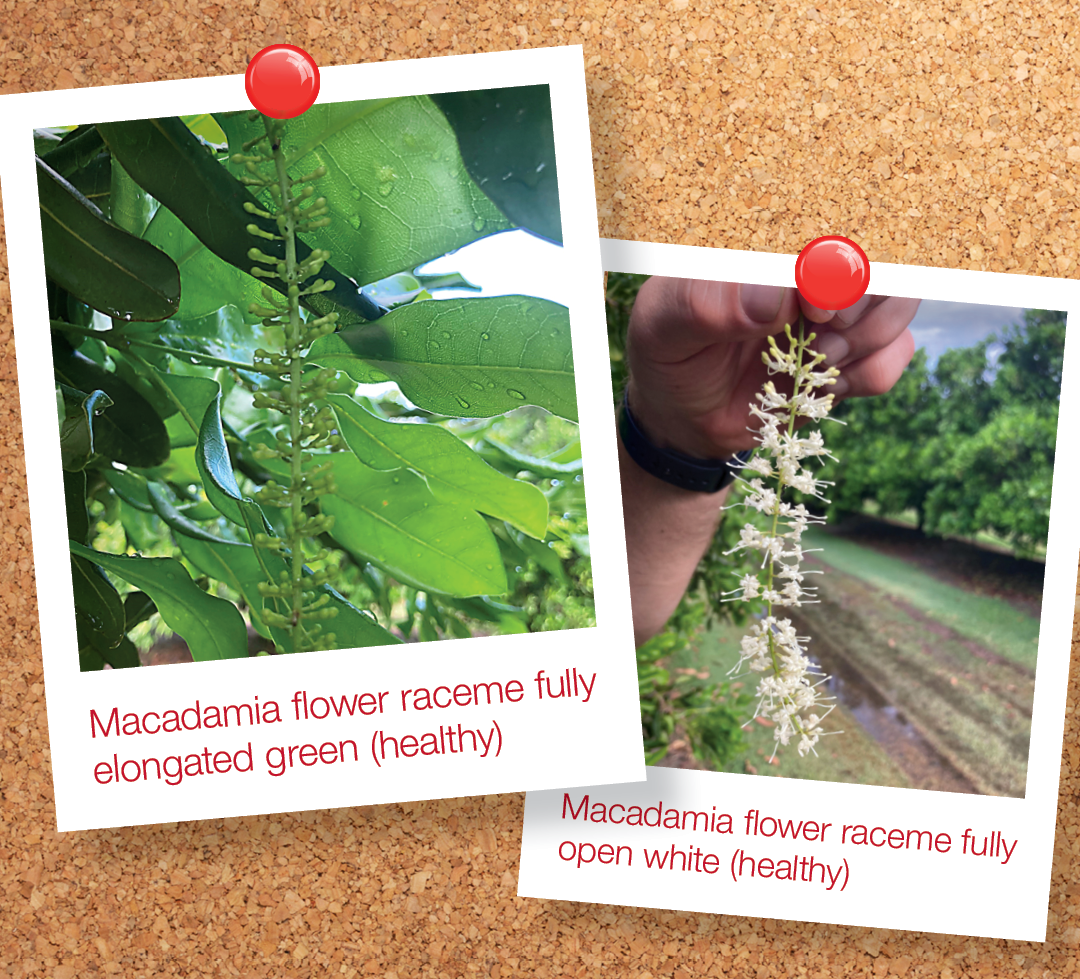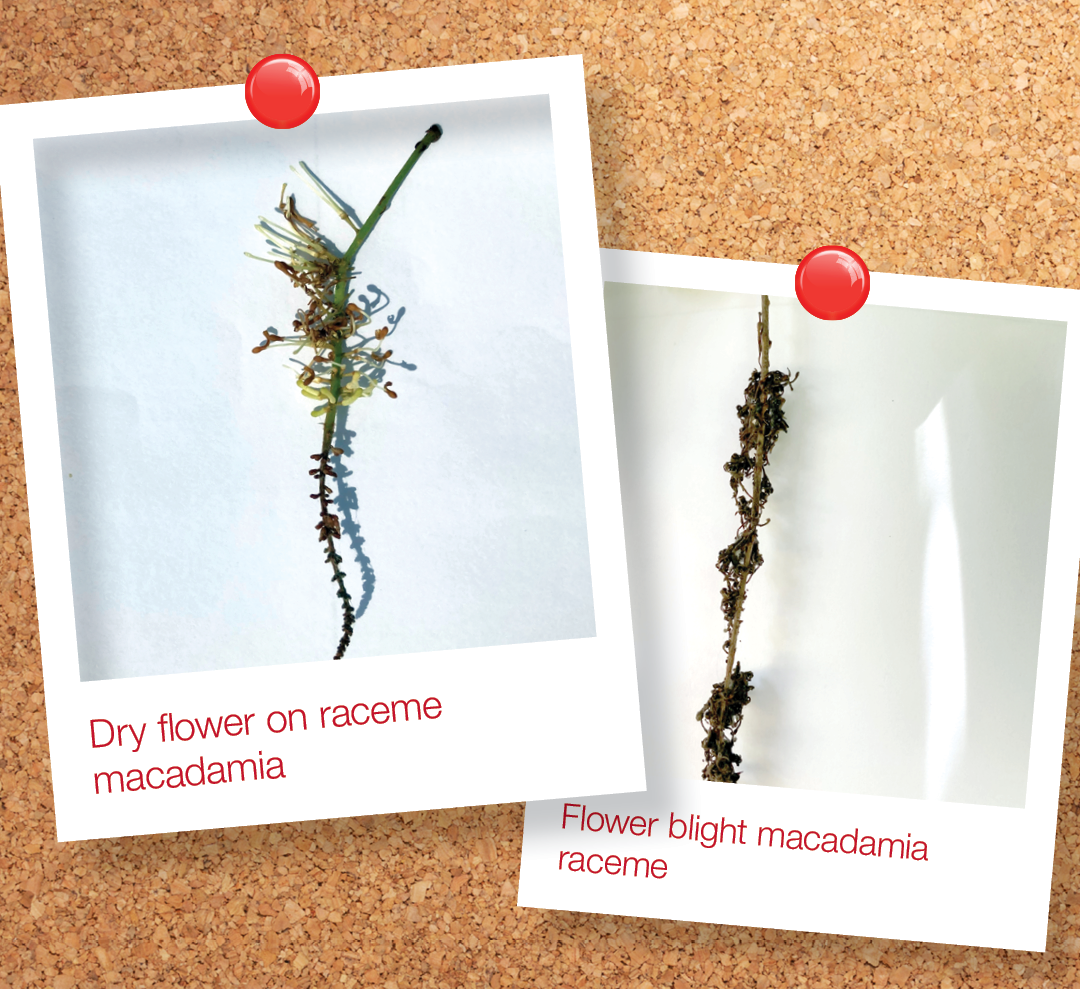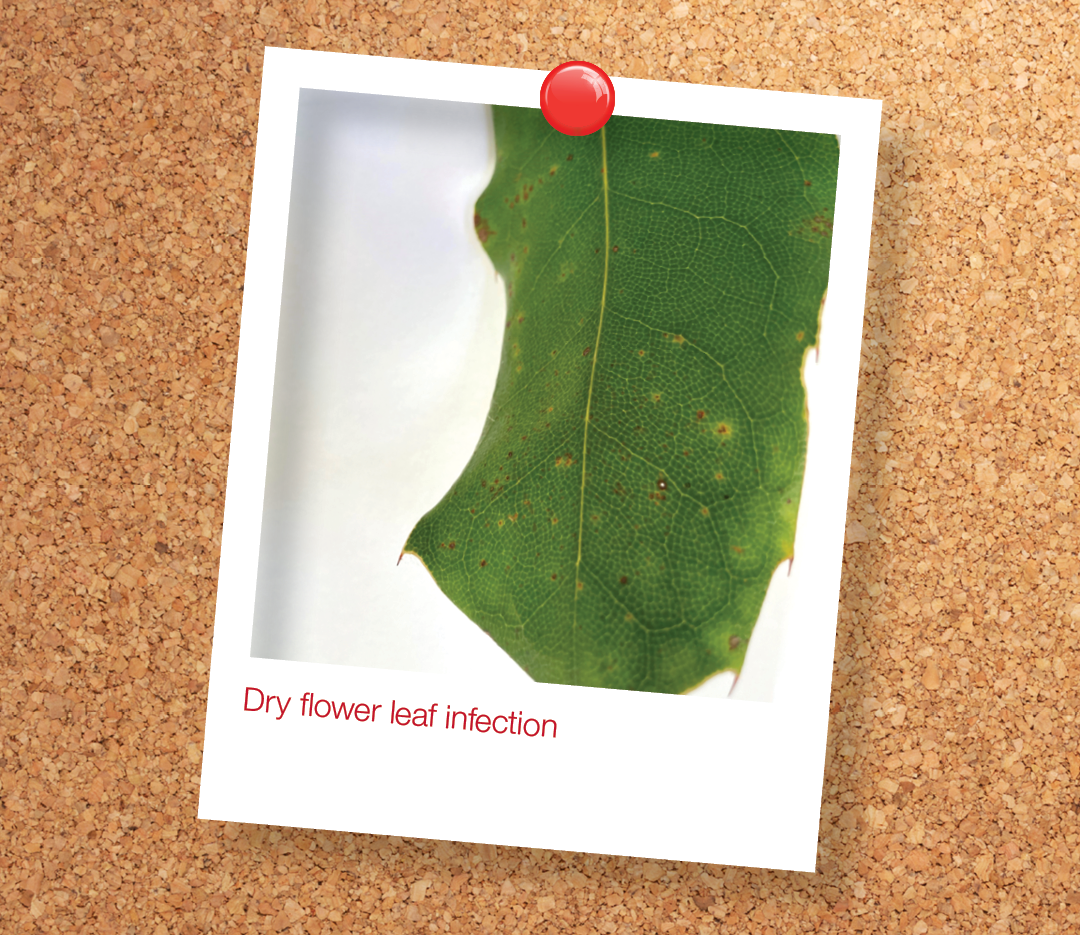One of the unusual challenges for macadamia growers is that the very long cycle between flowering and harvest leaves such a short window for pruning, mulching and other crop maintenance. That short window also creates ideal conditions for fungal diseases to proliferate and be spread through the orchard in time for the emerging flower racemes to appear.
“It’s such a long growth cycle that the previous harvest has only just concluded when flowering begins,” explains Mark Peacock, BASF’s Technical Development manager for Horticulture, “Final harvest has just wrapped up and flowering starts almost immediately. Fungal spores remain on leaves of recently pruned branches and the mulching process can be a bit like mowing the lawn on a dry day. Inoculum flies everywhere, and that’s a perfect way to spread disease.”
As Mark points out, growers need to act preventatively – even before they know exactly what disease or combination of diseases is likely to appear.

The flower blight complex of diseases tends to appear more often as dry flower disease in some macadamia growing areas and as botrytis in others. As Mark says: “You can get either or both according to the area you’re in and the seasonal weather conditions.”

To go to the trouble and cost of applying a fungicide before they are even sure the disease is present, growers need to be aware of how damaging dry flower disease can be and confident that the product they’ve chosen is effective.
Mark says the registration of BASF’s Merivon fungicide for control of the whole flower blight complex, including the two groups of pathogens that cause dry flower disease, has made the calculation much simpler.
The challenge for controlling dry flower disease is that it has a long latency period, so the infection can be present long before symptoms start to appear and fungicide use needs to be preventative, with the most effective applications being even earlier than for botrytis.
Merivon is a co-formulation of two active ingredients, one with the Group 7 mode of action and the other from Group 11. Most macadamia growers were already familiar with its use later in the season to control husk spot, so those who know all about dry flower disease’s potential to cause massive yield losses have been quick to take full advantage of the added registrations.
“We’ve had tremendous uptake,” Mark says. “Obviously we’ve been able to do demonstration trials and people knew the product from using it on husk spot. But I think mainly a lot of growers have been struggling with dry flower for years, so once they had that new window to use Merivon in they took it up pretty quickly.”

Mark stresses that the application needs to be early to get the best results. “You really need to make the first spray as close as possible to the flower racemes emerging to get the best possible protection. If you get it early, you’ll stop the disease developing much more effectively than if you sprayed even a couple of weeks later.”
The directions for use on the Merivon label specify that the first application for any form of flower blight should be before flowering stage 1, that is before the rachis is fully elongated. That can be followed by a second spray if it’s needed at stage 3, when the flowers are fully opened. Merivon shouldn’t be used more than three times in any one season, so Mark advises growers who have been relying on it for husk spot control to start the program for that disease with Belanty instead. Belanty is from Group 3, so that introduces a third mode of action that can be used twice before rotating back to Merivon for a third and final husk spot spray if it’s needed.
The reason why Mark thinks it’s important to prioritise using Merivon on dry flower disease is that reliable control has been so difficult to achieve in the past. Now that there’s such an effective treatment available for such a potentially damaging disease, he’s sure it pays to be proactive.
“Merivon is basically an insurance policy,” he concludes, “because you can’t do anything about dry flower if you haven’t taken action by the time symptoms start to appear.”
For more information about Merivon, speak to your local BASF representative or click here.
